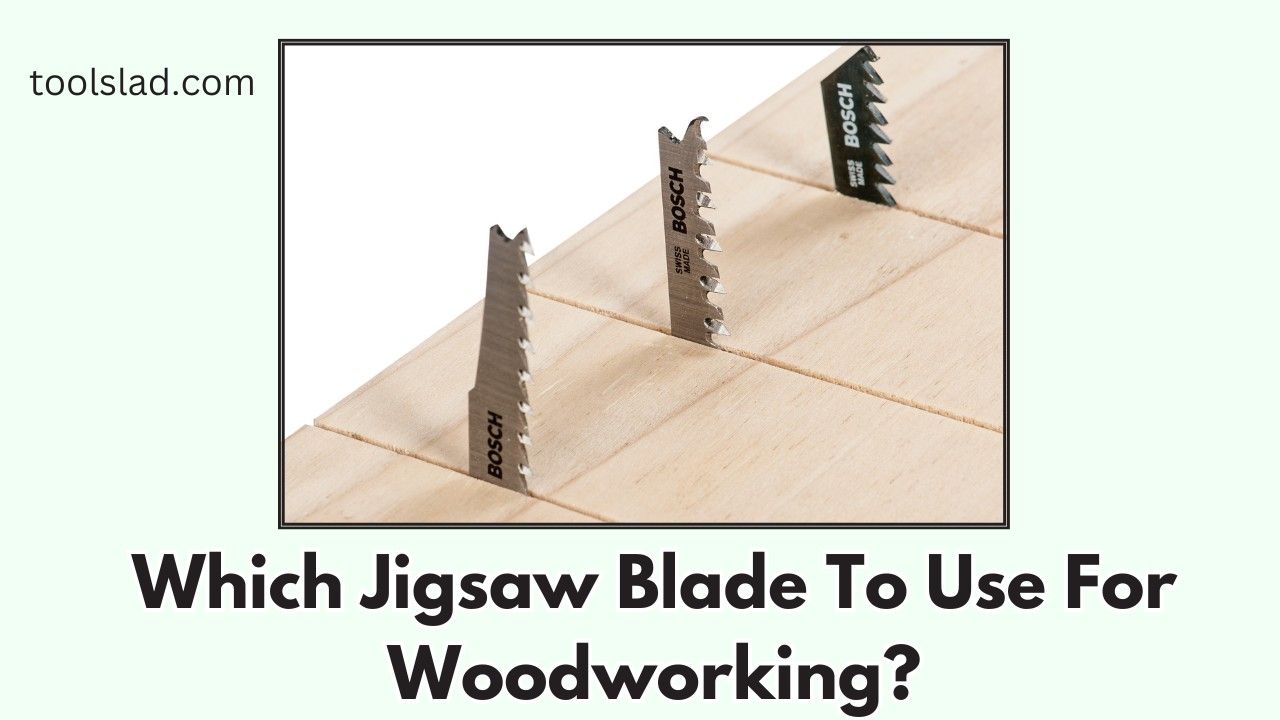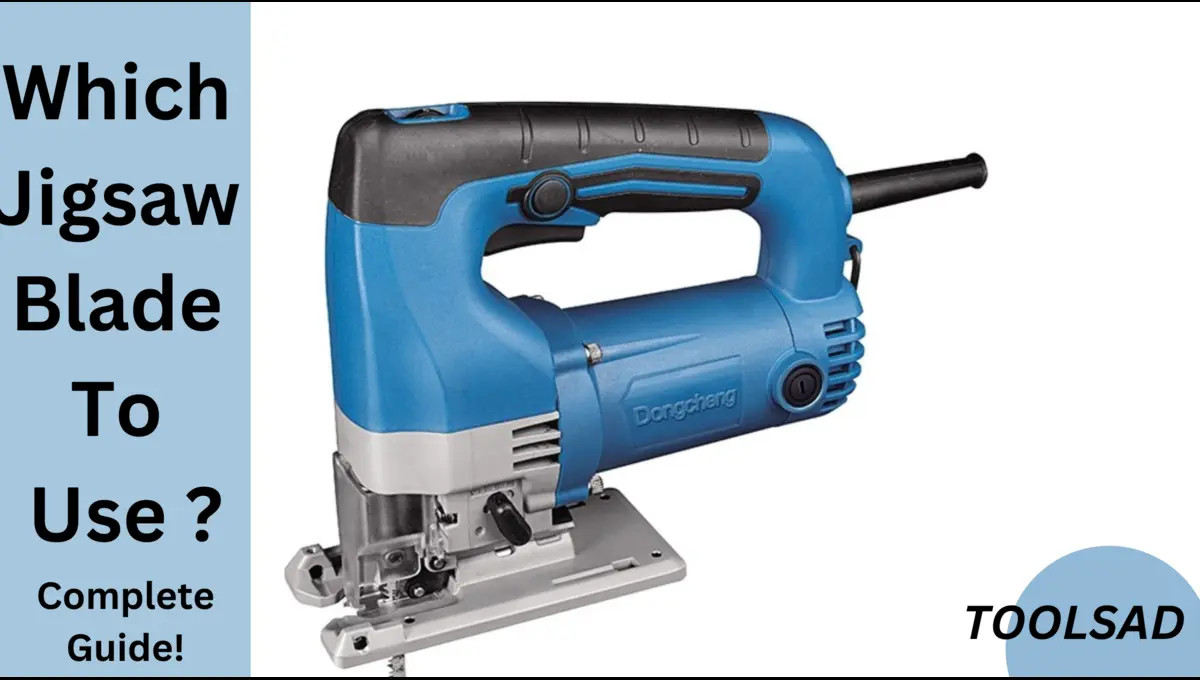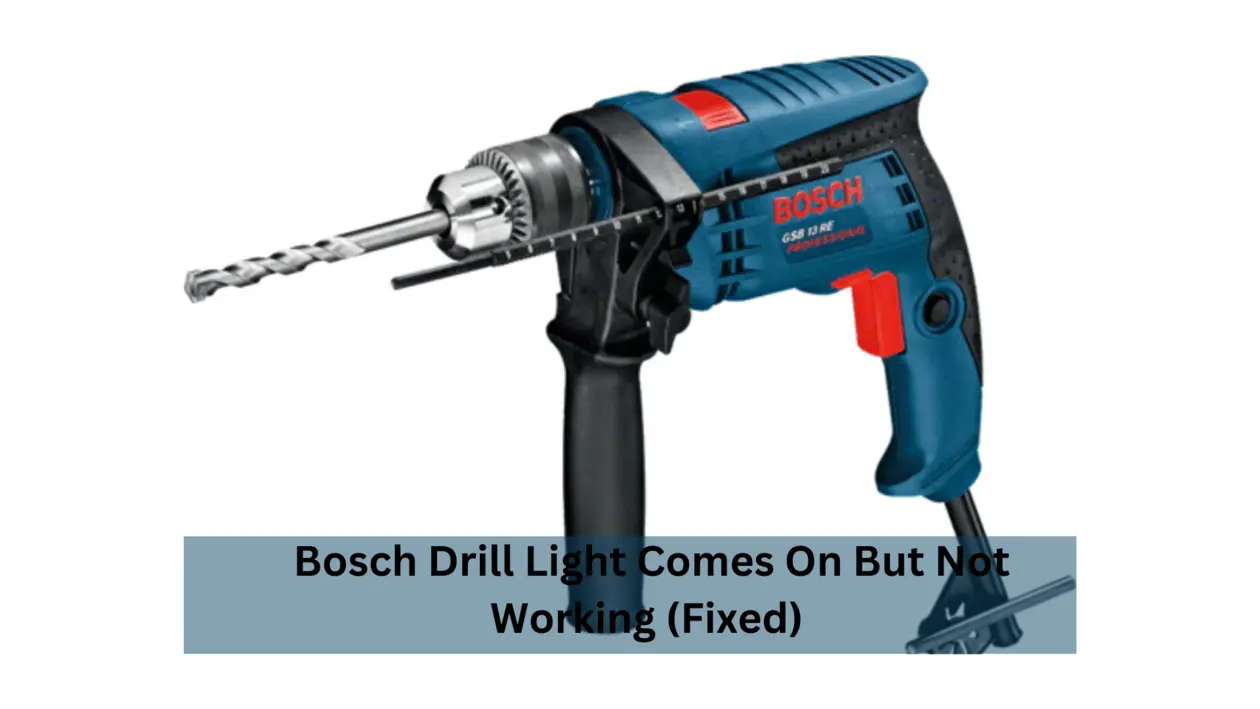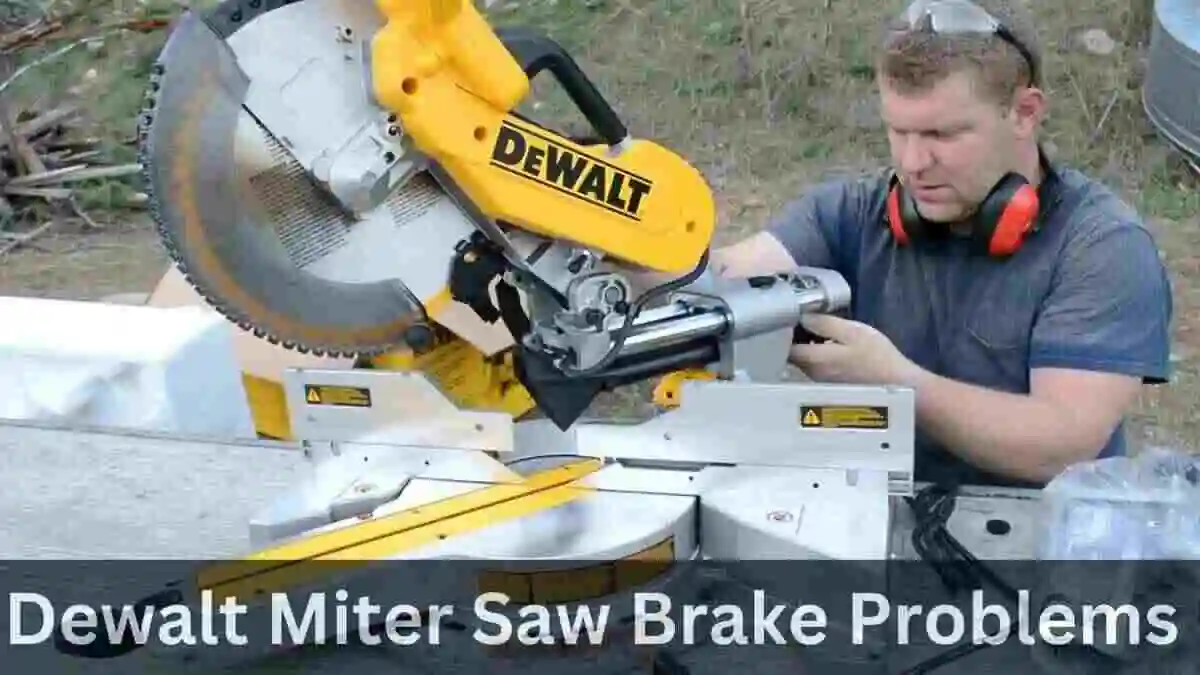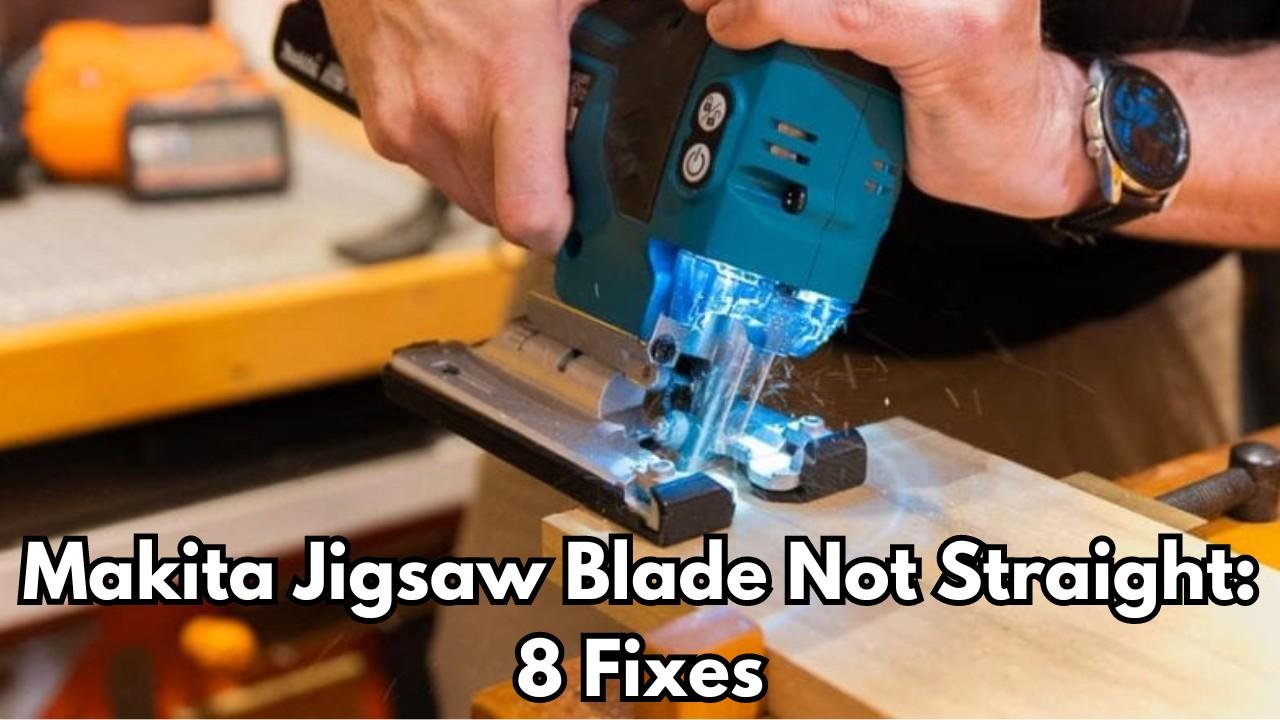Are you feeling puzzled about which jigsaw blade to use for your woodworking projects? Look no further! In this comprehensive guide, we will break down the different types of jigsaw blades available and help you choose the perfect one for cutting through wood like a pro. Say goodbye to guesswork and hello to precision with our expert tips and recommendations.
Jigsaw Blades and their Importance in Woodworking
Jigsaw blades are an essential tool for any woodworker, whether you are a professional or just starting. These small but powerful blades play a crucial role in the success of your woodworking projects. They come in a variety of shapes, sizes, and materials, each with its specific purpose and function.
The primary use of jigsaw blades is to make curved cuts in wood, but they can also be used for straight cuts and plunge cuts. With the right blade, you can achieve smooth and precise cuts on different types of wood, including softwoods like pine and hardwoods like oak.
Choosing the right jigsaw blade for your project can make a significant difference in the quality of your work. It not only affects the accuracy of your cuts but also determines how quickly and efficiently you can complete your task.
Which Jigsaw Blade To Use For Woodworking
1. T-Shank Jigsaw Blades:
T-Shank jigsaw blades are one of the most versatile and commonly used blades for woodworking. They are designed with a T-shaped shank that allows them to easily fit into most jigsaw models without the need for an adapter.
Composition:
T-Shank jigsaw blades are typically made from high-speed steel (HSS), bi-metal, or carbide. HSS is a durable material that can withstand high temperatures and is suitable for cutting softwoods and non-ferrous metals.
Bi-metal blades have a combination of HSS teeth welded onto a flexible carbon steel body, making them more durable and capable of cutting through thicker materials such as hardwoods and metal sheets.
Carbide blades have tungsten carbide grit bonded onto the blade body, making them extremely hard-wearing and ideal for cutting abrasive materials like ceramics, fiberglass, and laminates.
Advantages:
One of the main advantages of T-Shank jigsaw blades is their quick-change feature. As they do not require an adapter to fit into different types of jigsaws, they can be easily interchanged during a project without wasting time on removing or switching adapters. Additionally, their T-shaped shank provides a secure grip in the saw’s chuck, reducing the chances of slippage during use.
Furthermore, T-Shank jigsaw blades offer versatility in terms of speed and precision. They come in various lengths, widths, tooth designs, and materials to cater to different cutting needs. This allows woodworkers to make both straight cuts for shaping pieces or curved cuts with intricate details.
Application:
The versatility in composition makes T-Shank jigsaw blades suitable for various woodworking tasks such as ripping lumber or cross-cutting plywood.
The type of material being cut determines which blade composition should be used; for example: HSS blades are more suitable for cutting softer materials like pine, while carbide blades are better for harder materials like laminate.
T-Shank jigsaw blades are also ideal for making intricate cuts and creating decorative designs. With the ability to make tight curves and turns, they are perfect for projects that require precision and attention to detail, such as scrollwork or crafting wooden toys.
2. High Carbon Steel (HCS) Blades:
High-carbon steel (HCS) blades are a popular choice for woodworking projects due to their durability and versatility.
Composition:
These blades are made from a combination of iron and carbon, with the carbon content ranging from 0.6% to 1.5%. The higher carbon content gives HCS blades their characteristic strength and hardness, making them ideal for cutting through tough materials like wood.
Advantages:
One of the main advantages of HCS blades is their toughness. The high carbon content allows these blades to withstand heavy use without becoming dull or damaged easily.
This makes them a cost-effective option for woodworking enthusiasts who need reliable tools that can last through multiple projects.
In addition, HCS blades have excellent wear resistance, meaning they can maintain their sharpness even after prolonged use. This is especially beneficial when working with dense types of wood that can quickly dull other types of saw blades.
Application:
HCS blades are commonly used in a variety of applications within woodworking projects. They are particularly suitable for cutting softwood, hardwood, plywood, chipboard, and laminate materials. Their ability to cut through thick and tough materials makes them an excellent choice for rough cuts or initial shaping tasks.
Moreover, due to their durability and longevity, HCS blades are often used by professional carpenters or contractors who require reliable tools that can handle heavy-duty work regularly.
It should be noted that while HCS blades are versatile and durable, they may not be the best choice for all woodworking tasks. For example, if you need to make precise cuts on delicate or thin pieces of wood, a finer-toothed blade like High-Speed Steel (HSS) may be more suitable as it will provide smoother and cleaner cuts.
3. High-Speed Steel (HSS) Blades:
Composition:
These blades are made from a special type of steel that contains high levels of cobalt, tungsten, and molybdenum. This unique composition gives HSS blades their distinct advantages over other types of jigsaw blades.
Advantages:
One of the main advantages of HSS blades is their exceptional durability. The high levels of cobalt and tungsten make these blades extremely resistant to wear and tear, allowing them to withstand the demands of heavy use. This makes them an ideal choice for cutting through tough materials such as hardwoods and metals.
Another advantage of HSS blades is their ability to maintain their sharpness even after prolonged use.
The addition of molybdenum in the composition makes these blades highly resistant to heat, preventing them from dulling quickly when cutting through thick or dense materials.
This means that woodworkers can rely on HSS blades for consistently clean and precise cuts without having to constantly stop and replace dull blades.
Another advantage worth noting about HSS blades is their affordability compared to other types such as carbide-tipped or bi-metal jigsaw blades.
This makes them an attractive option for beginner woodworkers or those on a budget, without sacrificing quality and performance.
Applications:
In addition to their durability and sharpness retention, HSS blades also offer versatility in terms of application. They are suitable for cutting various types of wood, including softwoods, hardwoods, plywood, and MDF boards.
They can also be used for cutting non-ferrous metals such as aluminum and brass, making them a go-to option for projects that require both woodworking and metalworking tasks.
The high-speed capabilities of these blades also make them well-suited for fast-cutting applications such as rough shaping or creating intricate patterns on wood pieces.
Their ability to maintain speed while still producing clean cuts makes them a favorite among professional woodworkers who value efficiency in their work.
4. Carbide-Tipped Blades:
These blades are made from a combination of tungsten carbide and steel, creating a strong and durable cutting edge that can easily tackle even the toughest materials.
Composition:
Tungsten carbide is known for its hardness and resistance to wear, making it an ideal material for jigsaw blades. It is combined with steel to create a strong bond and ensure the blade’s longevity.
The tip of the blade is coated with carbide particles, which provide extra strength and durability.
Advantages:
The main advantage of using carbide-tipped blades is their longevity. They tend to last much longer than traditional high-speed steel (HSS) blades, making them a cost-effective option in the long run.
Due to their hardness and durability, they can easily cut through tough materials such as hardwoods, laminates, and metal sheets without losing their sharpness.
Another significant advantage of these blades is their ability to maintain a consistent cut over time. As they do not dull quickly like other types of blades, you can achieve smoother cuts without having to stop frequently to change the blade or sharpen it.
Application:
Carbide-tipped jigsaw blades are versatile in their application, making them suitable for various woodworking projects. They are particularly useful when working with dense or abrasive materials such as plywood, MDF boards, or particleboard.
These blades also excel at cutting through hardwoods such as oak or maple without chipping or splintering the wood. This makes them an ideal choice for precise cuts required for furniture-making or cabinetry work.
Furthermore, carbide-tipped blades have proven to be highly effective in cutting metal sheets or pipes due to their strength and toughness.
They can easily handle high-speed cutting applications without getting damaged or worn out quickly.
In addition to woodworking projects, these blades are also widely used in construction sites, metal fabrication shops, and even for DIY home improvement tasks.
5. Progressive Tooth Blades:
Composition:
Progressive tooth blades, also known as variable pitch blades, are a popular choice for woodworking projects.
These blades have teeth that are spaced differently along the edge, with some areas having larger gaps and others having smaller gaps. This unique composition offers several advantages over traditional straight-tooth blades.
Advantages:
One of the main advantages of progressive tooth blades is their ability to cut through various materials with ease.
The varying spaces between teeth help to reduce heat buildup and friction, making it easier to cut through both soft and hard wood without causing damage or burning.
This makes them ideal for cutting intricate designs or curves in wood without compromising on precision.
Another advantage of progressive tooth blades is their versatility. These blades can be used for both rough cuts and fine cuts, depending on the teeth spacing required.
For example, you can use the larger gapped areas for faster rough cuts while using the smaller gapped areas for more delicate and precise cuts. This makes them suitable for a wide range of woodworking applications such as creating furniture pieces or crafting decorative items.
Additionally, progressive tooth blades have a longer lifespan compared to traditional straight tooth blades. The varying spaces between teeth distribute wear evenly across the blade, preventing premature dulling in certain areas. This means you can use these blades for longer periods before needing to replace them.
6. Specialty Blades:
there may be times when a standard blade just won’t cut it (pun intended). This is where specialty blades come into play.
These blades are designed with specific materials and applications in mind, making them ideal for certain woodworking projects.
Composition:
Specialty blades are typically made from high-quality steel or carbide materials to ensure durability and precision cutting.
For example, diamond-coated blades are specifically designed for cutting through tough materials such as ceramic tiles or glass. The diamond coating allows for a smoother and more precise cut without damaging the material.
Advantages:
The biggest advantage of using specialty blades is their ability to handle unique materials that standard blades may struggle with.
They offer increased precision and efficiency while minimizing the risk of damage to both the material being cut and the jigsaw itself. Additionally, some specialty blades have unique tooth configurations that allow for faster cutting speeds without sacrificing accuracy.
Application:
There is a wide range of specialty blades available on the market today catering to different types of woodwork projects.
Some common examples include scroll-cutting blades for intricate designs in thin pieces of wood or metal; reverse-tooth blades that prevent splintering on delicate surfaces; laminate-cutting blades with fine teeth for smooth cuts on laminates; and flush-cutting blades designed to trim protruding edges without damaging surrounding surfaces.
One popular type of specialty blade is the downcut spiral bit which features an upward-facing design that pulls chips up through its center rather than pushing them downwards like traditional bits do.
This makes it ideal for working with fragile materials such as veneers or laminates where downward pressure could cause chipping or cracking.
Another commonly used specialty blade is the rough-cut blade which features wider and larger teeth, allowing for faster cutting speeds in thicker materials. These blades are often used for rough shaping or cutting through dense woods like oak or maple.
Considerations for Selection
When it comes to woodworking, selecting the right jigsaw blade is crucial for achieving clean and precise cuts. With a variety of jigsaw blades available in the market, it can be overwhelming to decide which one to use for your project.
1. Material:
The first and foremost consideration for selecting a jigsaw blade is the material of the wood you will be cutting. Different types of wood require different types of blades.
For example, if you are working with hardwoods like oak or maple, a carbide-tipped blade would be ideal as it is more durable and can handle tough materials without getting dull quickly. On the other hand, if you are cutting softwoods like pine or cedar, a high-speed steel (HSS) blade would work just fine.
2. Teeth Per Inch (TPI):
The number of teeth per inch on a jigsaw blade determines how smooth and fast it can cut through wood.
Blades with lower TPI are suitable for rough cuts as they remove more material at once but may leave behind splinters on the edges. On the other hand, higher TPI blades provide smoother cuts but may take longer to complete them.
3. Tooth Configuration:
Jigsaw blades come in different tooth configurations such as reverse/progressive teeth or straight/crosscut teeth.
Reverse/progressive teeth have alternating sets of larger and smaller teeth that allow for both aggressive and fine-cutting capabilities, making them suitable for various applications including woodworking.
Straight/crosscut teeth have uniform-sized teeth that are best suited for making straight cuts in thicker materials.
4. Blade Width:
Blade width plays an essential role in determining the precision of your cuts when using a jigsaw. The wider the blade, the better its stability and control while cutting curves or tight corners; however, wider blades may not be suitable for intricate designs or smaller projects that require more delicate cuts.
5. Shank Type:
Jigsaw blades come in two shank types - T-shank and U-shank. T-shank blades have a universal fit and are compatible with most jigsaws, providing better stability and control while cutting.
U-shank blades, on the other hand, are specific to certain models of jigsaws and may not fit all types. It is important to check your jigsaw’s compatibility before selecting a blade with a specific shank type.
Conclusion:
In conclusion, choosing the right jigsaw blade for your woodworking project is crucial to achieving clean and precise cuts.
By considering factors such as type of wood, thickness, and desired cut quality, you can determine which jigsaw blade will work best for your needs.
Remember to always use appropriate safety precautions when working with power tools and blades. With the right blade and technique, your woodworking projects will turn out beautifully every time. Happy sawing!
